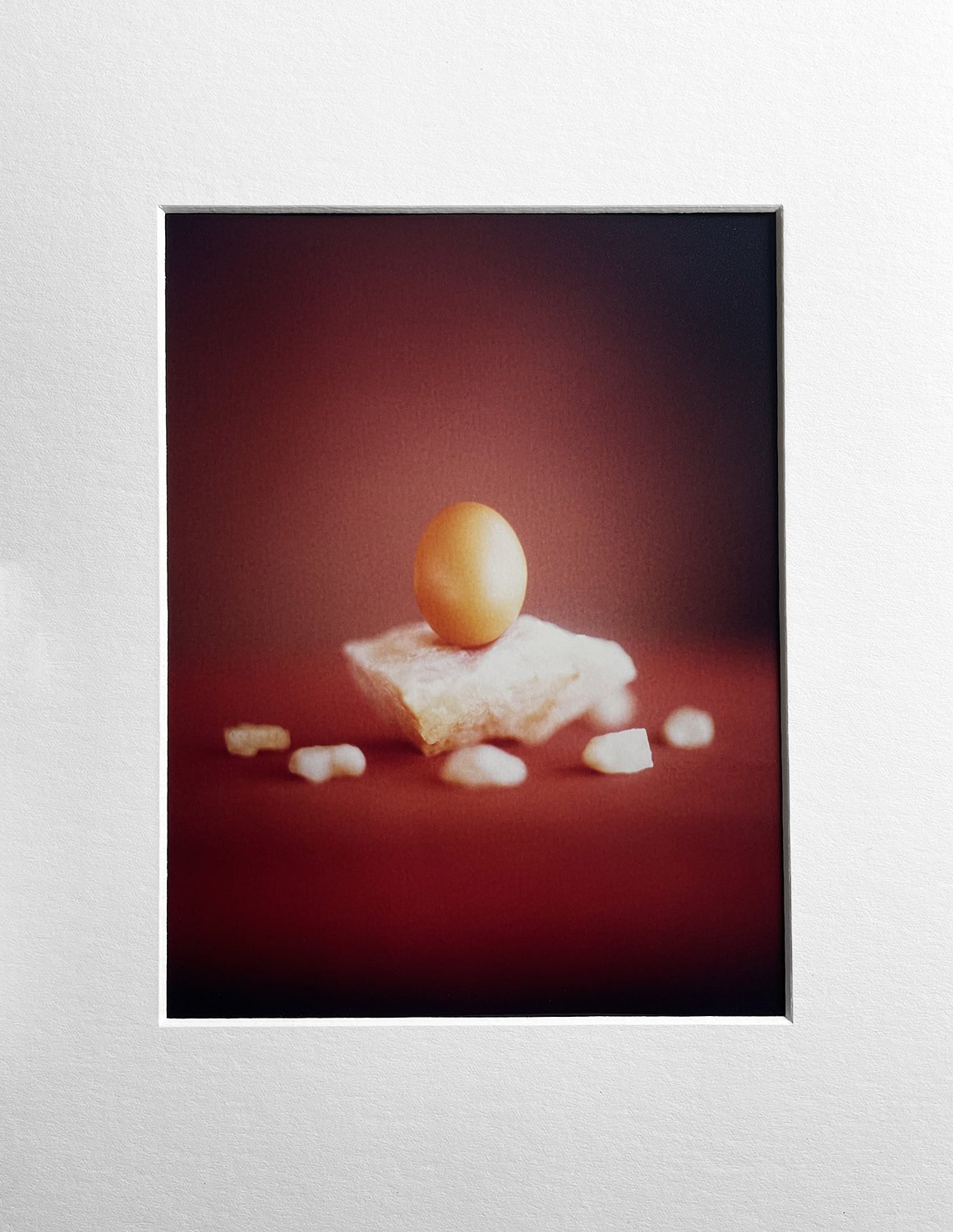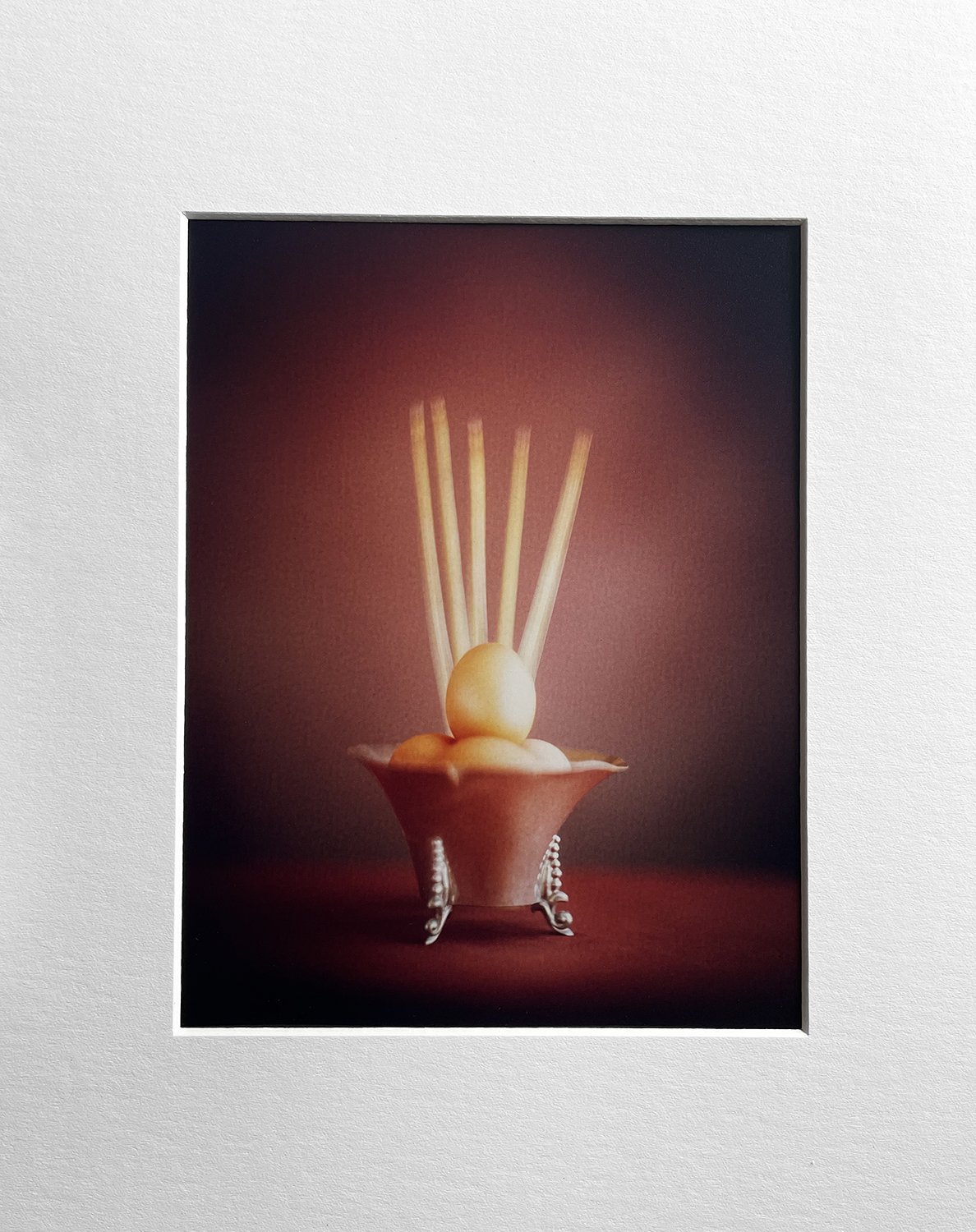“I was ashamed of myself when i realized life was a costume party; and I attended with my real face.”
"Fragility, Vulnerability, Stability, and Permanence,” May 4, 2023: RA-4 Color Reversal Print (direct positive).
I’ve been working with the RA-4 Reversal Color Direct Positive process for a while now. I’ve almost burned through a box of 100 sheets of paper so far. I’ve learned a lot. I’m trying to get ready for the spring and summer here to make flora, fauna, and landscape pictures with the process. After 20+ years of working in the wet and dry collodion processes, this is a breath of fresh air for me creatively. I absolutely love it.
The RA-4 reversal process is a bit difficult to predict. Serendipity is a prerequisite, a lot like the old processes I’ve worked in for so long. Today, some clouds popped up and completely changed the color of the prints. It was wonderful to see this happen. I wanted the prints to be "warm,” leaning into the red color. It worked wonderfully well for me. I’m making some more prints tomorrow with a very old vessel.
The silver cup in the image is from Europe—a colonizer metaphor. The Tabguache Ute used the yucca plant here, which is such a great metaphor for me to work with. The stalks, buds, flowers, and some fruits served as food. Roots can be used for soap and as a laxative, and leaf fibers can be used as cordage, weaving material, and to make sandals.
"European Silver, Eggs, and Yucca,” May 4, 2023: RA-4 Color Reversal Print (direct positive).
I ran across a painting by a Russian artist called Oskar Kokoschka. He painted “The Red Egg (1940–41);” it’s a political piece; it portrays the destruction of Czechoslovakia in 1939 following the Munich Agreement. It moved me. I wanted to address the metaphor of eggs in some work as it applies to my project. Eggs are often associated with the idea of fragility and vulnerability. In art, this metaphor can be used to convey a sense of delicacy or vulnerability. The American artist Robert Rauschenberg created a series of sculptures called "The Gluts," which featured fragile, egg-like objects made from found materials.
Eggs are also commonly associated with the ideas of transformation and metamorphosis. They contain the potential to become something entirely different. Artists have used this metaphor to create works that explore themes of change and evolution. The British artist Damien Hirst created a series of sculptures called "The Immortal," which featured cabinets containing rows of preserved eggs, each representing the potential for new life and growth. These ideas and metaphors really spoke to me.
When I was out cutting some yucca for my picture, I found this beautiful piece of white quartz rock. Most of the quartz here is red or brown. This is pure white, like the snow. I thought the idea of the fragility of the egg and the stability of the stone would be a nice metaphor.
Rocks are often associated with the ideas of stability and permanence. In art, this metaphor can be used to convey a sense of solidity or endurance. The American artist Richard Serra is known for his large-scale sculptures made from massive sheets of steel that resemble enormous rocks.
They can also be used to represent the passage of time and the accumulation of history (history and memory). In art, this metaphor can be used to explore themes of memory and nostalgia. The American artist Robert Smithson created a work called "Spiral Jetty," which features a massive spiral made from rocks and earth that stretches out into the Great Salt Lake in Utah. The work has become an iconic symbol of the land art movement and a testament to the enduring power of nature.


